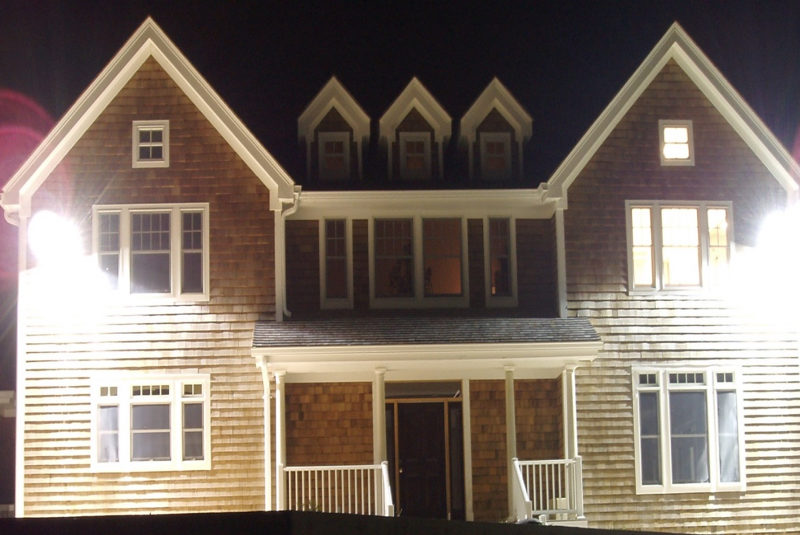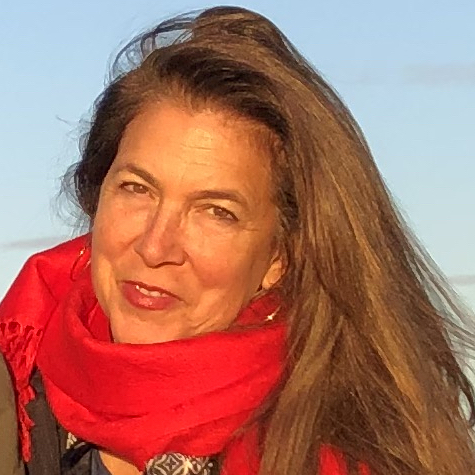

“Many species, including humans, need darkness to survive.” — The American Medical Association
When I recently read in the Huffington Post that 16 percent of Americans claim to have spotted a UFO, I thought, “Really? How?” Our skies have become so filled with light pollution, how would we even spot one? The wattage of the Sagaponack Rennert mansion alone would blind the best of alien navigators.
An unsullied night sky used to be one of the best things about the East End. In its pitch blackness, scientists say we would have been able to see 450 stars at one time. Today this sky field of diamonds is mostly hiding behind sky glow. And every year it keeps getting lighter. It’s as if we’d turned Van Gogh’s brilliant painting into “Semi Starry Meh Whatever Night,” and hadn’t even noticed.
Having lived most of my life on the East Coast, I’d come to believe that “dark skies” were supposed to be a soupy gray color. I’d look up, spot the Big Dipper, give myself a pat on the back and call it a day.
With all of the environmental calamities unfolding here on the ground, it’s easy to believe that not seeing the Big Dipper isn’t exactly a problem. In fact, light pollution is detrimental to birds, bats, myriad insects and even trees. It wastes money and energy and it accelerates climate change. Glaring night lights disrupt our sleep cycles and cause cancer. It has even been proven to make air pollution last longer.
Light pollution disrupts the body’s circadian rhythm, suppressing melatonin production, which in turn weakens the immune system. It also increases the risks for depression, diabetes, sleep disorders, heart disease, higher cholesterol, breast and prostate cancer, and obesity.
When bright lights turn night into day, the entire nocturnal ecosystem is thrown out of whack. Predators can’t hunt and prey can’t hide. Birds fly off course and moths commit kamikaze. Fireflies can’t flicker, frogs can’t croak, and anyone who can’t croak or flicker will never find a mate.
According to research scientist Christopher Kyba, “For nocturnal animals, the introduction of artificial light probably represents the most drastic change human beings have made to their environment.”
And for what? So that we can uplight our trees? Who needs to see your garden at 3 a.m. anyway?
While nobody goes out of their way to kill off the friendly firefly or develop prostate cancer, there’s a misperception that the brighter the lights, the safer you are. “Security lighting” is an oxymoron. Not only are you not any safer, but in some cases, bright lights help criminals see what they’re doing. As one lighting expert explained, “You’re not actually any safer. You just feel safer.”
One of the greatest benefits to saving the night sky is that stars are simply cool and beautiful. It’s no coincidence that cosmology and cosmetics come from the same root — “cosmos” means beauty. You can see photographs of Saturn a hundred times and be impressed, but when you see it yourself for the first time, there’s an OMG factor.
I discovered this when I stopped into The Custer Observatory on the North Fork. It was like walking through a secret portal into some sort of celestial candy land. Astronomer Steven Bellavia, who co-workers joked was the Vanna White of galaxy revelation, rolled back the observatory dome ceiling to reveal a patch of sky, pointing out a newly discovered comet named Leonard. We looked at a double star a thousand light years away. Then at the galaxy M81 and M82, twelve million light years away. I learned that all galaxies are shaped like fried eggs. And that the moon is considered to be nature’s light pollution. Sometimes constellations force the imagination, as with Auriga. Is that seriously supposed to be a charioteer?
Later the astronomy teacher John Walch at Southampton High School showed me their larger-than-average planetarium. “We discover one to two exoplanets in another solar system every week!” (Astronomers speak with a lot of exclamation points).
One time the NASA Hubble telescope was redirected to a part of the universe that had “nothing” in it. After two weeks of filming, they found over a thousand galaxies just in that one tiny chunk of black sky.
“That’s just observable space!” said Walch.
I learned that Mercury gets up to 800 degrees Fahrenheit during the day, but that once the shade hits it, the temperature drops to negative 300. He told me that when a star dies, everything it was made from gradually forms everything else, including us. We’re all made out of recycled exploding stars!
The more hard facts one learns about the night sky, the more unbelievable it becomes.
In order to reduce light pollution, we Earthlings don’t need to kill the lights. Just dim them. Point outdoor lighting downward, lower the fixtures closer to the ground and shield the bulb so that it lights only where you walk. Installing motion detectors or a timer is a convenient way to save energy. Only use holiday lights on holidays. And don’t display “runway lights” on your driveway unless your home is an airstrip.
Nothing blots out the night sky faster than “uplighting.” Avoid uplighting trees, fences, and foliage or the side of your house. Replace the highly polluting glare of blue-white lights with soft amber color bulbs that are just as effective.
Then when you’re done, step outside. Watch a meteor shower. Listen for singing frogs. The hoot of an owl. Maybe get a phone app that identifies the constellations.
How to talk to your neighbor about their glare problem: Start out with the premise that neighbors are people too. They may not realize that their lights are “trespassing” onto your property (a code violation in most towns). Explain the problem. If you’re angry, try to use your inside voice. Or write a letter. Bring up money. Everyone likes money, especially when they learn how much they can save. Show them how easy it is to make changes with a guide to dark sky lighting from the International Dark-Sky website.
Still no luck? Report them. But first ask yourself, ‘Would Mr. Rogers march on down to city hall and slap them with a code violation?’
As I left Southampton High, I had to ask Walch that dorkiest of questions: Do you believe in aliens? He didn’t miss a beat. “Yes! Life on another planet could be bacteria, fungus on a rock… Why would Earth be the only planet able to harbor life?”
I think of something Southampton Town Supervisor Jay Schneiderman once said: “If we can’t see the stars, we lose our sense of place in the universe.” The night sky is our touchstone to the infinite. A comforting reminder of how small we are. As we earthlings fumble along, stepping in it here and there, stars remain a constant. Let’s not lose sight of them.
More Information:
International Dark Skies (darksky.org): Learn about light pollution’s effects on wildlife, safety, energy waste and health. Guide to lighting codes in your town and how to advocate for improvement. Check out maps of light pollution around the world or the NASA Blue Marble Navigator for a bird’s eye view of the light pollution in your area.
Southampton Dark Skies Advisory Committee (southamptontownny.gov): Information about lighting codes in Southampton and how to get them enforced. Go to Southampton Online Solutions (SOS) to voice complaints.
Hamptons Observatory Of East Hampton (hamptonsobservatory.org): Astronomy lectures, star parties and more. Free. Join “The Night of Shooting Stars,” a lecture about a newly discovered meteor shower discovered and presented by meteorologist Joe Rao. Meteors are always unpredictable but you could see one of the largest showers of shooting stars in decades. Monday, May 23, 7 p.m.
The Custer Institute And Observatory (custerobservatory.org): Find more than two dozen telescopes of every variety, a meteorite from 1500s Argentina and more. They make honey, host an amateur radio club and even grind their own telescope mirrors. Join summer star gazing parties and concerts in the field. Open to visitors every Saturday from 7 p.m. to midnight.
Night Hikes: Friends of Long Pond Greenbelt and The South Fork Natural History Museum (SoFo) offer monthly full moon and star gazing hikes through the meadow behind the SoFo Museum in Bridgehampton. Listen for warblers and peeper frogs emerging in spring. The “Owl Prowl” and “Salamander Hike” are especially fun.
SkyView App ($2.99): Hold your phone up to the sky to discover names of planets, stars and zodiac constellations within its view (including the International Space Station). Even on overcast days.
 More Posts from Jenny Noble
More Posts from Jenny Noble